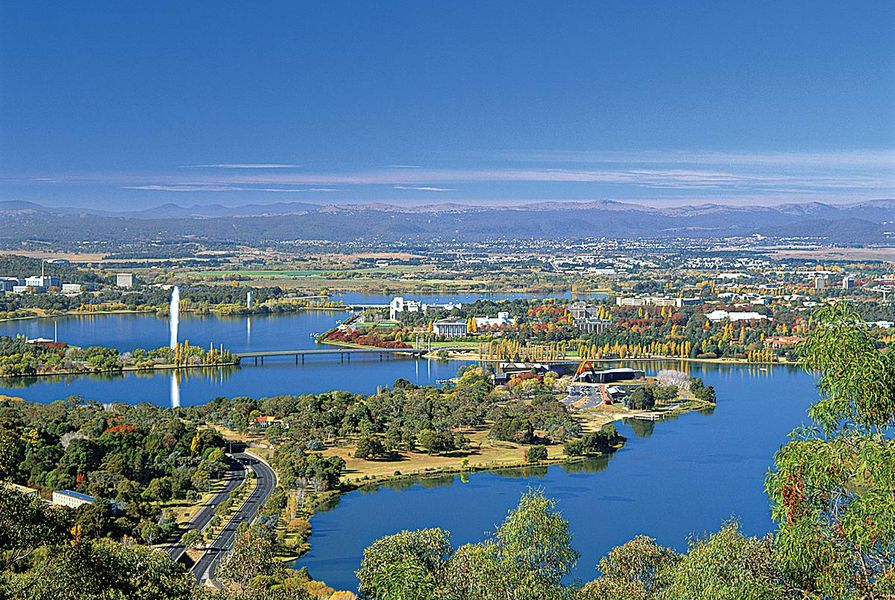The National Capital Authority (NCA) is a relatively small organization given the size of its responsibility.
With a staff of approximately fifty employees – including landscape architects, architects, urban planners, economists, foresters, engineers and more – the agency is responsible for the planning, promoting, developing and maintaining of the national capital.
The organization manages assets worth about $750 million, which includes land in diplomatic estate, the National Triangle, the Parliamentary Zone and Lake Burley Griffin – all with a meagre operating budget of $15 million. Of this, nearly $10 million goes towards the maintenance of the national capital.
From 1957 to 1989, the powerful National Capital Development Commission essentially ran Canberra. In 1989, as part of the Commonwealth granting self-government to the Australian Capital Territory, the NCA was created to represent the interests of all Australians in the planning and development of the national capital. It shares the role of managing Canberra’s landscape with the ACT Government, which is responsible at a more local level for the normal day-to-day planning and development matters of the territory.
Operating as part of a dual planning regime isn’t without its challenges. “We need to separate very carefully the national and local interest,” says Gary Rake, the NCA chief executive. “In looking at the national capital, we see the city in the landscape as something unique and special. Once we’ve identified an appropriate area for urban development, it falls within the ACT Government to decide what kind of development goes in. We hope that our work complements each other.”
Aerial view of Canberra.
Developing a clear communications strategy has been essential for the agency. Besides coordinating with the local government, the agency also needs to ensure their decisions and day-to-day operations are transparent to those it represents: the Australian people. The development of its online portal, Have Your Say, has been one way of connecting to the national audience. The live online forum proposes topics of discussion (parking issues within the capital and proposed infrastructure improvements are some of the most recent) to which people can respond through posting comments. Rake has been pleased with the use of the site so far, though he encourages more public servants to embrace the technology. “There’s no purpose having the forum available to people across Australia to post their views without us interacting.”
The authority also connects with Canberrans through convening a public meeting once a year, where the full board of the authority and senior management team sit on stage and take questions from the public. “We often receive open criticism of our work,” says Rake. “It creates a great dialogue, that frankness and honesty, and I do believe the public value it.” Operating for the last two years, the open forum has been popular, with over two hundred in attendance the first year and over one hundred and fifty the second. The sessions run for as long as people are interested in staying: four hours has been the standard.
According to Rake, the challenge for the NCA in the years ahead is to make sure that the notion of the national capital remains up to date with its contemporary Australian views and national identity. Some of the operating mechanisms of the NCA were designed and put in place when the ACT was in its infancy; the ACT has now been self-governing for more than twenty years. Rake says, “The oversight of the NCA was a bit more complex in those early years than it needs to be today. We need to be prepared to recognize the maturity of the ACT as a jurisdiction and pull back from the delivery of some functions.”
However, Rake does not believe the visioning work of the NCA is done, far from it. “The worst outcome for the NCA would be to allow ourselves to become nothing more than a municipal land manager looking after a carefully manicured patch of green around Parliament House. We need to make sure that the way we go about our work fits the national significance of this place. We need to make sure we’re continuing to think about why national capital is important, what it represents to the nation, and that in fulfilling our functions, we keep our focus on that much larger picture.”
Source

People
Published online: 23 Sep 2011
Words:
Gweneth Newman Leigh
Issue
Landscape Architecture Australia, May 2011

















